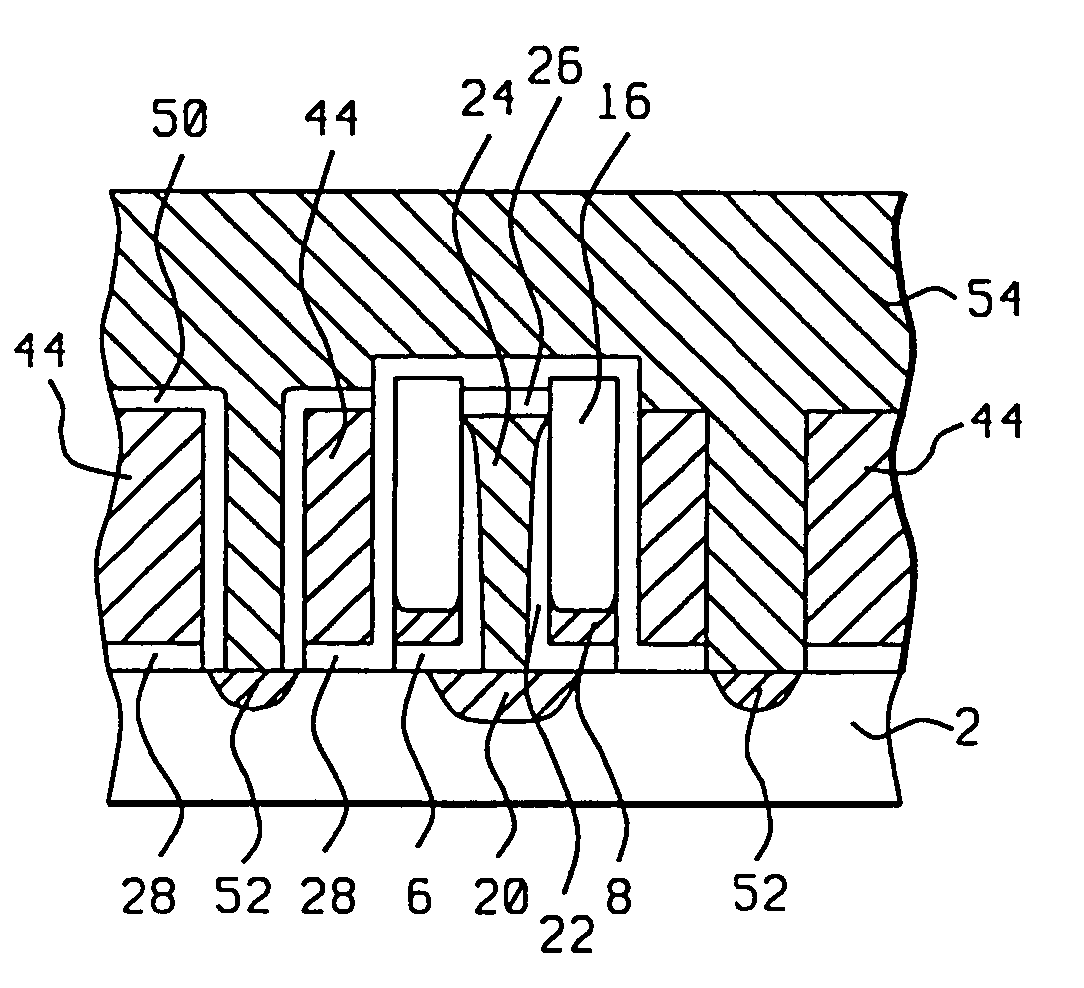Structure and fabricating method with self-aligned bit line contact to word line in split gate flash
- Summary
- Abstract
- Description
- Claims
- Application Information
AI Technical Summary
Benefits of technology
Problems solved by technology
Method used
Image
Examples
Embodiment Construction
[0015] Preferred embodiments of the invention are well described with the aid of FIGS. 3a-3j and 4a-4j. A method of fabricating a novel split gate flash memory cell is presented in FIGS. 3a-6j, where top views of the cell are presented at successive stages of the process and in FIGS. 4a-4j, which show the corresponding cross-sections. A floating gate oxide, 6, is formed on a semiconductor substrate, 2, which preferably is a silicon substrate, to a thickness of about 80 Angstroms, followed by deposition of a poly 1 layer, 8, to a depth of about 800 Angstroms. Active regions, 10, are defined using isolating regions, such as shallow trench isolation regions, 4. This is followed by deposition of a nitride layer, which preferably is a silicon nitride layer to a depth of about 2500 Angstroms. A photoresist layer, 14, is then formed as shown in FIGS. 3b and 4b. The photoresist pattern, 14, is used in etching the silicon nitride layer to achieve the shape of region 12 of FIG. 4b. A poly 1 e...
PUM
 Login to View More
Login to View More Abstract
Description
Claims
Application Information
 Login to View More
Login to View More - R&D
- Intellectual Property
- Life Sciences
- Materials
- Tech Scout
- Unparalleled Data Quality
- Higher Quality Content
- 60% Fewer Hallucinations
Browse by: Latest US Patents, China's latest patents, Technical Efficacy Thesaurus, Application Domain, Technology Topic, Popular Technical Reports.
© 2025 PatSnap. All rights reserved.Legal|Privacy policy|Modern Slavery Act Transparency Statement|Sitemap|About US| Contact US: help@patsnap.com



